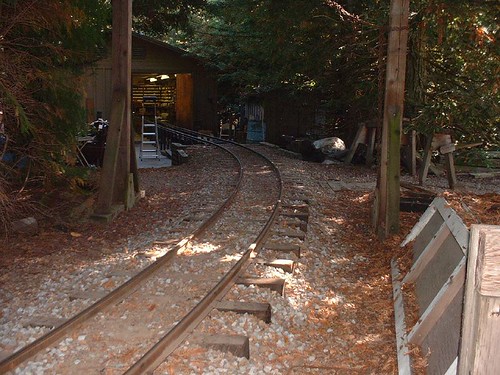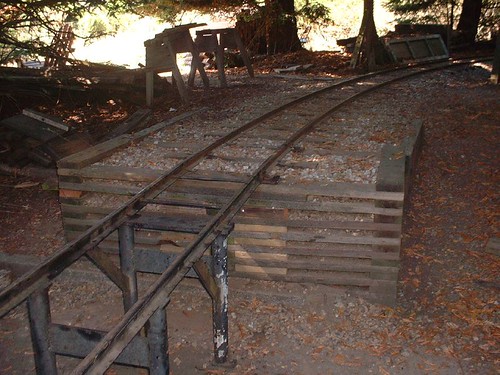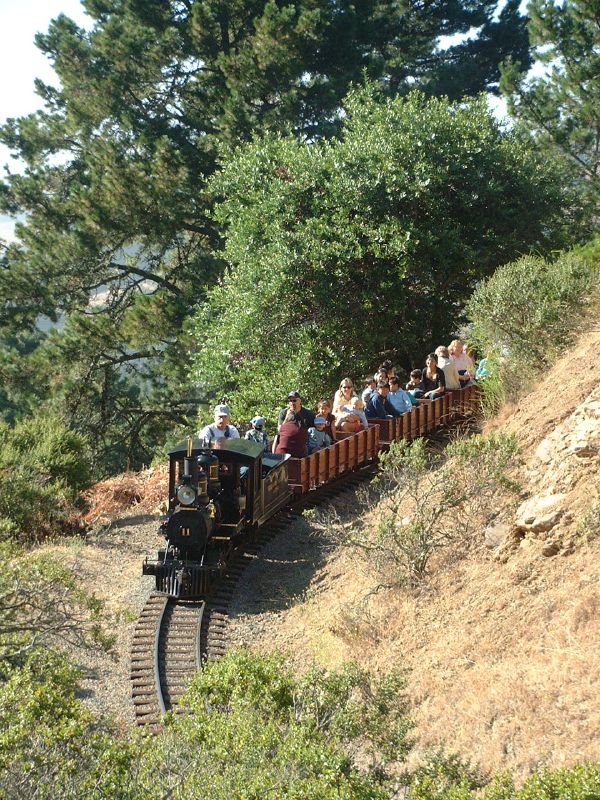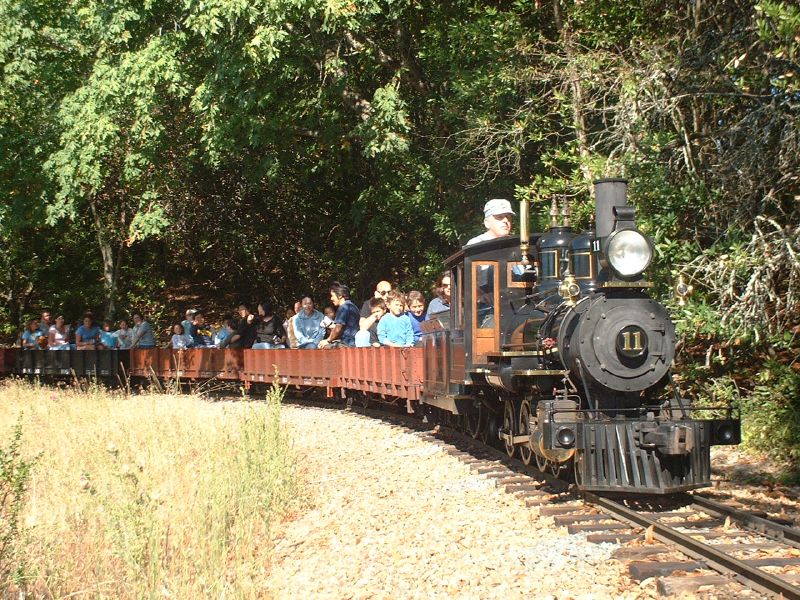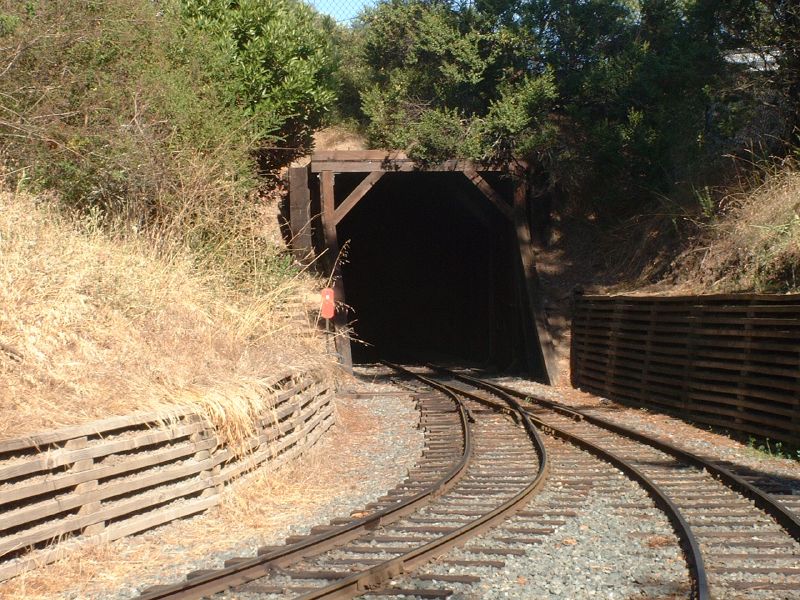A briefing on starting up
I haven't posted about the latest two trips up to the railroad. Real life is beginning to intercede with the impending new semester at grad school, so I slipped a bit on this blog.
Last thursday was 4 hours at the railroad, just working on the platform. I answered lots of questions about how steam engines work, and how track gets laid and maintained. I punched tickets, told people to keep their arms and heads inside the carriages, and picked up litter in the platform area. Fairly uneventful.
It's last Tuesday that was the interesting day. Number 11 had been in the shop, having its right-side injector checked. I helped him get it back onto the locomotive, and then he talked me through the process of steaming up. I can't remember it all, since there are tons of little things to do. I could work up a checklist at some point. Anyway, there are a dozen or so lubrication points, which require two different sorts of oil. There're check-valves which need to be closed at one point, and opened at others. When the engine is making steam, several components in the cab operate off that steam. When the engine is cold, however, we replicate steam with air pressure from an air compressor. The two primary components that run off this air feed are the blower and the atomizer. The blower is a pipe of live steam that exits right beneath the smoke stack in the front of the locomotive. It blasts steam up the smokestack, creating a vacuum in the front of the smokebox, which draws air through the fire. The atomizer, on the other hand, is sort of like a fuel injector in the firebox. Our engines are fired with #2 stove oil, which drips into the atomizer. The atomizer, another feed of steam, turns the oil into a mist which sprays over the fire.
Both of these components are essential to getting the fire going. You do it by lighting a few pieces of paper towel alight with a match and shoving it into the firebox. Once it's going, you turn on a bit of blower to create an airflow through the firebox, and a bit of both fuel feed and atomizer, to give the fire fuel. It'll (generally) pop to life, and then you just have to wait for 45 minutes or so to bring up the water to the boiling point.
Last thursday was 4 hours at the railroad, just working on the platform. I answered lots of questions about how steam engines work, and how track gets laid and maintained. I punched tickets, told people to keep their arms and heads inside the carriages, and picked up litter in the platform area. Fairly uneventful.
It's last Tuesday that was the interesting day. Number 11 had been in the shop, having its right-side injector checked. I helped him get it back onto the locomotive, and then he talked me through the process of steaming up. I can't remember it all, since there are tons of little things to do. I could work up a checklist at some point. Anyway, there are a dozen or so lubrication points, which require two different sorts of oil. There're check-valves which need to be closed at one point, and opened at others. When the engine is making steam, several components in the cab operate off that steam. When the engine is cold, however, we replicate steam with air pressure from an air compressor. The two primary components that run off this air feed are the blower and the atomizer. The blower is a pipe of live steam that exits right beneath the smoke stack in the front of the locomotive. It blasts steam up the smokestack, creating a vacuum in the front of the smokebox, which draws air through the fire. The atomizer, on the other hand, is sort of like a fuel injector in the firebox. Our engines are fired with #2 stove oil, which drips into the atomizer. The atomizer, another feed of steam, turns the oil into a mist which sprays over the fire.
Both of these components are essential to getting the fire going. You do it by lighting a few pieces of paper towel alight with a match and shoving it into the firebox. Once it's going, you turn on a bit of blower to create an airflow through the firebox, and a bit of both fuel feed and atomizer, to give the fire fuel. It'll (generally) pop to life, and then you just have to wait for 45 minutes or so to bring up the water to the boiling point.

